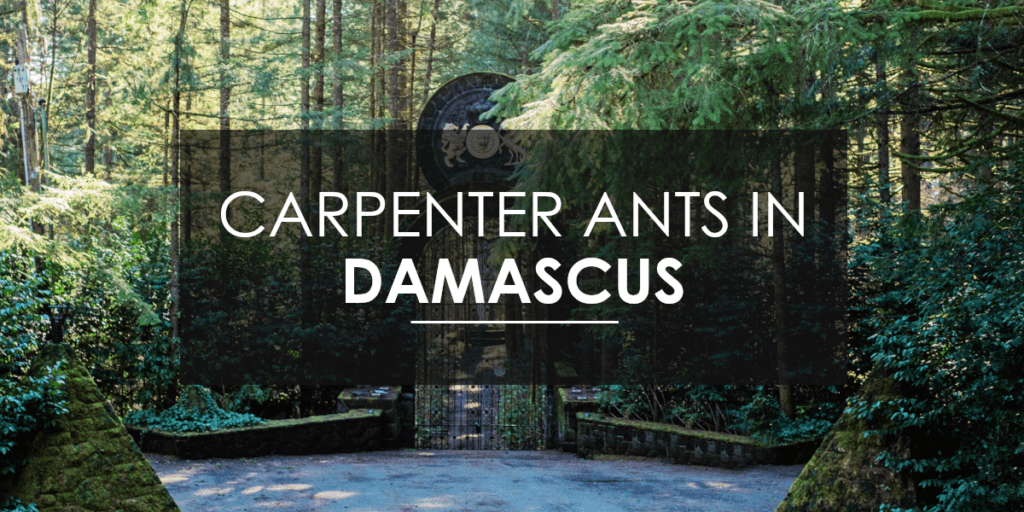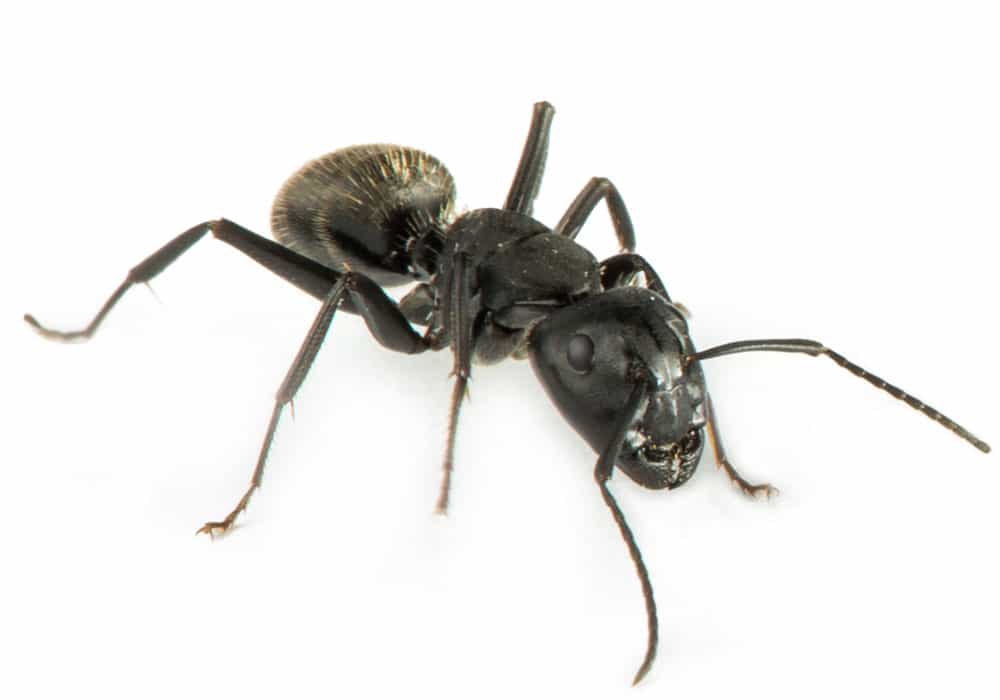Discovering carpenter ants invading your Oak Grove home can be a concerning challenge. While these insects play a vital role in the ecosystem, their presence within our living spaces poses serious threats. In this step-by-step guide, we will explore the positive environmental impact of carpenter ants and, more importantly, equip homeowners with essential steps to keep these industrious insects at bay. From understanding their habitat to implementing preventive measures and considering professional assistance, this guide aims to empower Oak Grove residents to stop carpenter ants from invading their homes.
Carpenter Ants’ Habitat and Environmental Impact
Carpenter ants typically live in forested environments where they play a crucial role in decomposing dead wood and plant material. As they excavate tunnels or galleries in decaying wood or dead trees, they accelerate the breakdown of cellulose and release nutrients back into the soil. This process is essential for nutrient cycling in forest ecosystems. Moreover, the excavation of nests by carpenter ants involves moving soil and debris, which aerates the soil, improving its structure and furthering plant growth. In their natural habitat, carpenter ants thus play a positive role, contributing to the overall health of forest ecosystems.
Caution for Homeowners
Despite their positive contributions to natural habitats, carpenter ants pose real threats to homeowners, as they can just as easily form nests in homes as they can in decaying wood or dead trees. The Pacific Northwest is considered an especially high-risk area for carpenter ants due to a combination of environmental factors that create conditions favorable for these ants to thrive. These contributing factors include the Pacific Northwest’s moist climate, mild winters, abundant wooded areas, diverse flora and fauna, high vegetation density, the prevalence of tree canopies overhanging rooftops, wood home construction and landscaping features, urban-woodland interface, and population density. In conclusion, the unique combination of environmental factors in the Pacific Northwest makes it imperative for homeowners in the region to remain vigilant against carpenter ant infestations, as these ants can exploit the preceding conducive conditions and pose a significant threat to residential structures.
Twelve Steps to Prevent Carpenter Ants
Fortunately, there are various steps homeowners can take to lower the risk of carpenter ant infestations:
1. Secure Trash Receptacles
Ensure that trash cans are tightly sealed and dispose of garbage regularly to avoid attracting carpenter ants. These insects are opportunistic feeders and may be drawn to food waste. A secure trash management system contributes to maintaining a pest-resistant environment around your home.
2. Seal Potential Entry Points
Carpenter ants can exploit even minor openings to access your home. Carefully inspect your home for common entry points, such as cracks around the foundation or gaps around windows, doors, or utility penetrations. Seal any cracks or openings using caulk or other suitable sealants. Repair or replace torn screens in windows and doors. Add door sweeps to exterior doors. These will not only help weatherize your home but also help to prevent carpenter ants from entering your home at ground level. These simple yet effective measures close off entry points, helping to stop carpenter ants from invading your home.
3. Trim Back Foliage
Ensure that trees and shrubs around your home are well-trimmed and do not directly contact the home’s exterior. Cut back any branches that overhang the roof. Carpenter ants often use branches as a bridge to enter homes. Keeping foliage in check reduces the likelihood of these insects finding a direct route to potential nesting sites.
4. Remove Attractive Materials
Carpenter ants are most attracted to wood that is moist or decaying. Remove and replace any water-damaged or rotting wood in and around your home. This step includes addressing leaks, repairing damaged roofing, and replacing wet or damaged insulation.
5. Store Firewood Away
Keep firewood, lumber, or any other wood in contact with the soil away from the exterior of your home. Carpenter ants can use these materials as nesting sites. Having them too close to your house increases the likelihood of an infestation.
6. Store Food Properly
Make sure food items are stored in airtight containers to eliminate potential food sources for carpenter ants. Clean up spills promptly and avoid leaving food crumbs or residues in accessible areas.
7. Maintain a Clean Home
Regularly clean your home, paying special attention to areas where crumbs or food particles may accumulate. Empty your trash regularly. These actions help eliminate attractants and make your home less appealing to carpenter ants.
8. Monitor Humidity Levels and Fix Moisture Issues
Address any moisture problems in or around your home, as carpenter ants are most attracted to moist or damp areas. Repair leaky roofs, pipes, and faucets. Use dehumidifiers and adequate ventilation in areas prone to high humidity, such as attics, basements, and crawlspaces. Monitoring and controlling indoor moisture levels make these spaces less attractive to carpenter ants, as dry environments are less conducive to their nesting activities.
9. Keep the Home’s Exterior Clean
Remove any tree stumps, and clear out debris, such as leaves and dead wood, which can harbor carpenter ants. Create a clear space between your home’s foundation and landscaping, especially if that landscaping includes wooden components, such as recycled railroad ties.
10. Use Insect-Resistant Mulch
If you use mulch in your landscaping, opt for varieties that are less attractive to carpenter ants. Some mulches, especially those made from wood, can serve as potential nesting sites. Choose insect-resistant mulch to minimize the risk of attracting carpenter ants to your yard or home.
11. Perform Regular Inspections
Regularly inspect the exterior and interior of your home for common signs of carpenter ants, such as sawdust-like material (frass), damaged wood, or the presence of carpenter ants themselves (with or without wings). Early detection allows for prompt intervention.
12. Choose Aspen Pest Control’s Home Protection Plan
While performing the steps above will undoubtedly reduce the risk of carpenter ant infestations, there is no guarantee that they will keep them at bay. Although carpenter ants prefer moist, decaying wood, they often excavate dry wood as well. In fact, carpenter ants often build satellite nests in drier areas, such as the wall voids within the home, where their brood can survive through the winter. To prevent carpenter ants from excavating such nests, consider purchasing Aspen Pest Control’s Home Protection Plan. Our year-round pest control service consists of our technicians applying a protective barrier around the exterior of your home at least once per quarter, impeding carpenter ants from gaining a foothold within your home. We guarantee our work, so if you notice any pest activity between quarterly treatments, we will return and retreat your home at no cost to you.
Conclusion
In conclusion, safeguarding your Oak Grove home against carpenter ant invasions requires a comprehensive and proactive approach. While acknowledging the beneficial role of these ants in the environment, homeowners must remain vigilant, particularly those in high-risk areas like the Pacific Northwest. The preventive steps outlined above offer a practical guide to fortifying your home against potential infestations. From sealing entry points to maintaining cleanliness and addressing moisture issues, these measures collectively contribute to a pest-resistant living space. For added assurance, consider Aspen Pest Control’s Home Protection Plan, providing a year-round defense against carpenter ants. By implementing these strategies and partnering with our pest control experts, you can stop carpenter ants in their tracks and enjoy the benefits of a secure and pest-free home nestled within the beauty of your Oak Grove surroundings.
If you’re interested in pest control services that are designed to suit your needs, lifestyle, and budget, then contact Aspen Pest Control today for your free quote!







